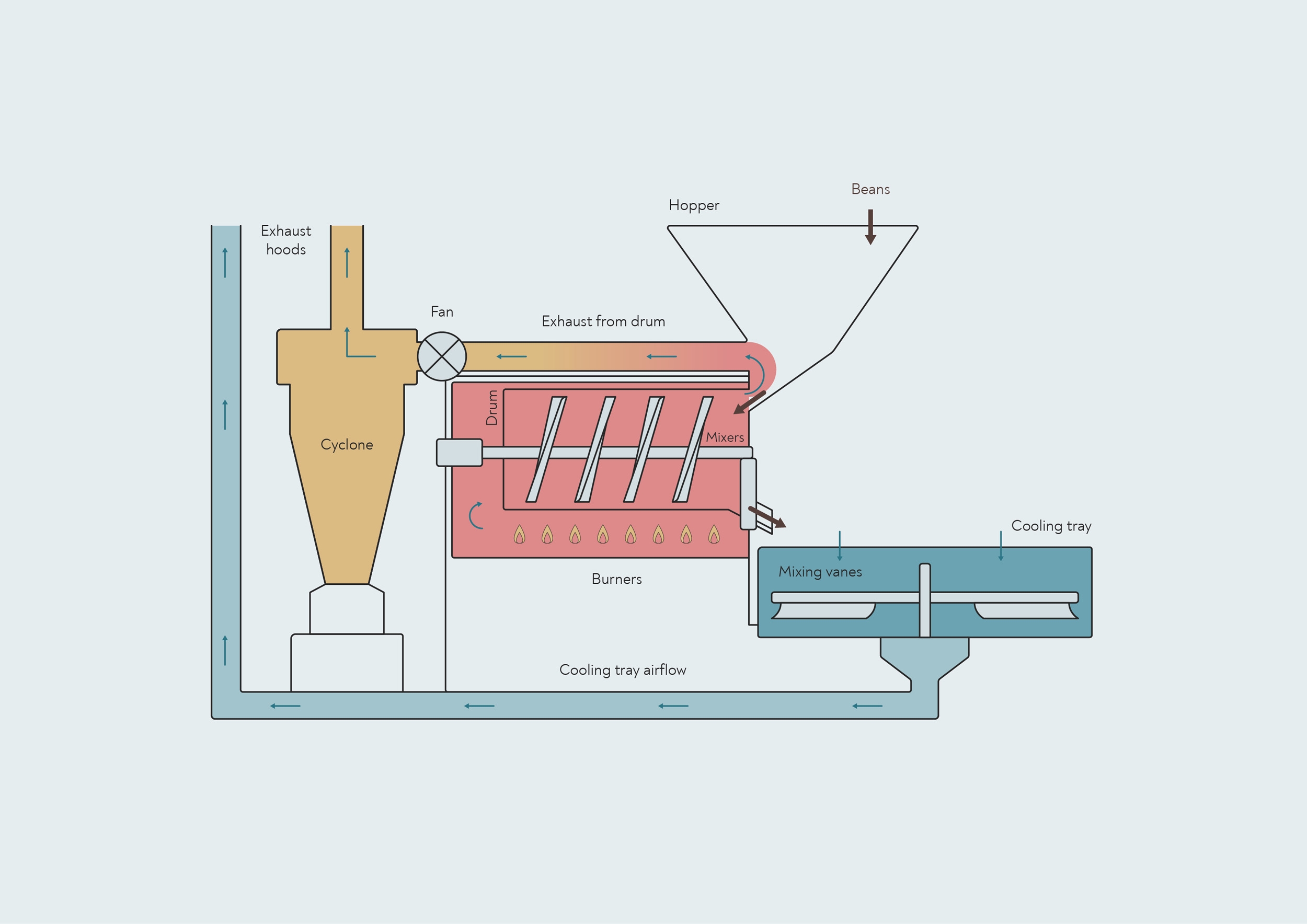It is not our objective to advise you on which brand of roaster to purchase. Instead, our goal is to help you to understand some important considerations about the different types of roasting machines available on the market so you can make educated purchasing decisions to meet the needs of your roastery.
Directly Heated Drum Roasters
Directly heated drum roasters share a basic set of features. The diagram below shows the attributes of a typical directly heated drum roaster.
 Schematic of a directly heated drum roaster. Brown arrows show the movement of beans through the roaster; blue arrows show airflow. Adapted from Pereira et al 2020
Schematic of a directly heated drum roaster. Brown arrows show the movement of beans through the roaster; blue arrows show airflow. Adapted from Pereira et al 2020
A gas burner (or electric heating element) underneath the drum heats the drum wall directly. Simultaneously, a fan in the exhaust draws air into the roasting machine. The burner rapidly heats the air when it enters the machine, and that hot air passes through the drum until it reaches the exhaust.
Beans enter the drum via a hopper positioned above the roasting machine. As the drum rotates, mixing vanes (also known as ‘flights’) within it stir the beans, to ensure even heating. The beans are heated mainly by conduction from the drum walls and convection from the hot air passing through the drum. The exhaust fan draws roasting fumes and chaff out of the drum during the roast, and a cyclone separates chaff from the exhaust gases.
At the end of the roast, the beans pass through a door at the front of the drum and drop into a cooling tray. To ensure rapid, even cooling, a powerful fan draws cold air over the beans while mixing vanes stir them.
The Drum
A drum can be either single- or double-walled and fabricated of either solid or perforated metal. Directly heated drums are generally made of solid metal in order to protect beans from the heat of the flame.